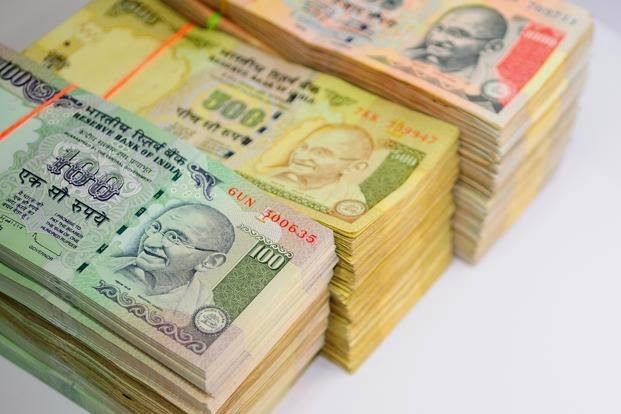How Much Money Stock Day Traders Make
Post on: 17 Май, 2015 No Comment

See the potential in day trading, and how to realize that potential.
Stock market day trading profits will vary from trader to trader, but here are some scenarios. Getty Images
Whether it’s for lifestyle, thrill seeking or the challenge of it, the question of how much money stock market day traders make inevitably arises. How much stock day traders make will vary drastically, with some day traders losing their capital, and others utilizing their capital to produce a high monthly income. Where a trader lands on this scale is largely impacted by risk management and strategy.
Risk Management
Professional day traders—those that do it for a living—typically keep the risk on each trade very small. Usually less than one percent of capital. For example if trading a $30,000 stock account, don’t risk more than $300 per trade (1% of $30,000).
Strategy is broken down into two components, for the sake of the scenarios below — win rate and profits relative to losses.
The win rate is how many times you win, divided by the total number of trades. If a strategy wins 60 out of 100 trade, then it has a win rate of 60 divided by 100, equaling 60%
At first glance a high win rate is what most traders want, but it only tells part of the story. If you have a very high win, but your winners are much smaller than your losing trades, you still won’t be profitable.
In addition to ideally having a win rate near 50% or higher, profits relative to losses (reward to risk ratio ) is another factor that must be considered. Most day traders seek to have their winners bigger than their losers, usually by about 1.5 times or more. For example, if risking $300 on a trade (maximum potential loss) the trader seeks to make at least $450 on profitable trades.
How Much Day Traders Make Scenarios
For the scenario below assume that winners are 1.5 times greater than losses. The trader has a 55% win rate and $30,000 in capital. No more than one percent of capital can be risked on any one trade.
Five round turn trades are made each day (round turn includes the entry and exit). There are 20 trading days in the month, so 100 round turn trades per month. Commissions and fees are $30, round trip ($15 in and $15 out).
4:1 leverage is used on the account. This means that even though the trader only has $30,000, they can use up to $120,000 as long as all positions are closed before the end of the trading session.
$30,000 is the recommended (legal limit is $25,000) starting balance for stocks, see Minimum Capital Required to Start Day Stocks to see why.
Day Trading Stocks
Assume a day trading strategy where the stop loss is $0.04 and your target is $0.06.
The account balance is $30,000, so the maximum risk per trade is $300. With a $0.04 stop loss we can take 7500 ($300 / $0.04) shares on each trade and maintain the $300 risk cap (not including commissions).
Please note that in order to take 7500 shares the share price will need to be below $16 (attained by $120,000 in buying power divided by 7500 shares). If the share per price is more than $16 you’ll need to take fewer shares. The stock also needs to have enough volume for us to take such a position.
Here’s how much you can make day trading stocks:
- 55 trades were profitable: 55 x $0.06 x 7500 shares = $24,750
- 45 trades were losers: 45 x -$0.04 x 7500 shares = ($13,500)
Gross profit is $24,750 — $13,500 = $11,250
Net profit is $11, 250 — commissions ($30 x 100 = $3, 000) = $8,250 for the month.

This is the theoretical profit; see Refinements below to see how this gets adjusted for the real world.
The reward to risk ratio of 1.5 is used because it is fairly conservative, and reflective of the opportunities that occur all day, every day in the stock market.
$30,000 is also an appropriate balance to start day trading stocks; more is recommended if you wish to trade higher priced stocks.
The $0.04 stop and $0.06 is used just as an example. Depending on the volatility of the stock this may need to be decreases, but more than likely expanded if the stock moves a lot. As the stop expands, the number of shares taken will decrease.
Often on winning trades it won’t be possible to get all the share you want; the price moves too quickly. Therefore, assume that on winning trades you only, on average, end up with 6000 shares. This reduces the net profit to $3,300, instead of $8,250.
Small alterations can have a big impact of profitability.
Some other assumptions were also made in the example above. Mainly that the trader is able to find a stock that allows them to fully utilize their capital (including leverage), while employing a 1.5 reward-to-risk ratio. Finding five trades a day will be more difficult on some days than others.
Slippage is also an inevitable part of trading. That is when a larger loss occurs than expected, even when using a stop loss. Slippage will largely depend on the volume of the stock relative to your position size.
To account for slippage, reduce net profitability figures by at least 10%. Given this scenario and refinements, it is possible to make about $2,970 trading a $30,000 account (the $3,300 mentioned above, reduced by 10%).
Adjust this scenario accordingly based on your stop and target (average reward to risk), capital, slippage, win rate, average win/loss position sizes and commissions. Based on your proposed strategy, it is possible to research much of this before you begin trading to get an idea of how much you can make.
How Much Money Stock Day Traders Make — Final Word
The above scenario indicates it is possible to make more than 20% per month day trading, theoretically. This is very high by typical standards, and most traders should not expect to make this when accounting for real-world issues such as slippage and not always being able to get the full position they desire on winning trades. Even so, with a 55% win rate and with a strategy that produces bigger winners than losers making 5% to 15% per month is possible, but isn’t easy, even though the numbers make it look that way.
Forex and futures day traders can get started with much less capital than the $30,000 recommended for day trading stocks, see Forex Day Trading with $1000 or Less and Minimum Capital Required to Start Day Trading Futures .
Be sure to sign up for the About.com Day Trading Newsletter. Receive a list of trading articles from About.com and other day trading sites each weekend.
Also sign up for Cory’s weekend newsletter. which includes stocks and currencies to watch, as well trading trading tutorials.














